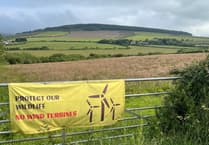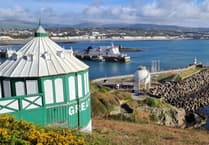There are nearly 600 red necked wallabies in the island according to recent survey.
Manx Wildlife Trust (MWT) carried out the first accurate count of the red necked wallabies in the Ballaugh Curragh ASSI (Area of Special Scientific Interest) and Ramsar site.
Ben Harrower of BH Wildlife Consultancy was commissioned by the charity to do the survey.
Ben specialises in counting large mammals using a thermal imaging camera mounted on a drone. His core consultancy work is counting deer for large estates, but he has counted smaller isolated populations of wallabies at Woburn Abbey and on an island in Loch Lomond.
Ben was in the Isle of Man from January 8 to 11 this year, and although the strong winds prevented them from doing as much surveying as hoped, they did complete an accurate count of the population in the Curragh, which is believed to be the core wallaby area.
Two surveys, carried out across 400 hectares of the Ballaugh Curragh over two consecutive nights, gave an average number of 568 wallabies, a density of 140 per 1km2.
As the survey site included surrounding agricultural land, it is thought the density would be higher when the wallabies retreat into the ASSI during the day.
The full report has been shared with DEFA, MNH, all Manx farming and conservation organisations, and is now available to the public, along with a film documenting the survey, at www.mwt.im for Manx Invasive Non-Native Species Week which runs next week, May 15 to 21.
MWT chief executive officer, Leigh Morris said: ‘Our simple aim from carrying out this survey is to enable the IOM to have more informed discussions about the future management of our Ramsar site.
'I was with Ben and his wife for the entire time for both counts and we’re 100% confident in the numbers. It was very interesting to watch, and I was personally astounded at the number we counted - there were far more then we were expecting.’
Ben Harrower of BH Wildlife Consultancy said: ‘The results of the survey were really eye opening.
'The wallaby population at this site is into the several hundreds and they appear to be doing very well in this habitat.
'It would be interesting to look at the impacts that they are having. I can only compare these numbers to those of muntjac deer in the UK where the deer have been seen to have quite a high impact.’
MWT hope that this new data, along with existing studies of the hydrology of the site and nesting bird surveys, will help inform discussions about the future management of this important site.





Comments
This article has no comments yet. Be the first to leave a comment.